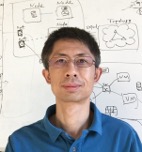This presentation will describe a "Software Defined Science DMZ (SD-SDMZ)" deployed by the University of Maryland Mid-Atlantic Crossroads. This Software Defined Science DMZ is a regional facility serving the MAX participant community. Built upon technologies similar to those used in modern data centers this "cloudified SDMZ" provides a scalable, multi-tenancy environment, where each user or user group can allocate dedicated resources and use in an isolated, independent and elastic fashion. In addition external resources have been integrated such as direct connections to public clouds along with research and education network services from Internet2 and ESnet.
Embedding this facility in the University of Maryland Mid-Atlantic Crossroads regional network allows the SD-SDMZ to leverage rich connectivity to advance cyberinfrastructure to provide new and flexible services. The result is a regional edge facility where users can obtain traditional Science DMZ data transfer service, and/or have specialized topologies built which integrate local cloud based compute, storage, and external connections to public clouds or external destinations.
Slides for download: powerpoint format
This presentation will describe a DOE funded research project, SENSE: SDN for End-to-end Networked Science at the Exascale. This project is led by the Energy Sciences Network (ESnet) and the project team includes Lawrence Berkeley National Lab, Caltech, Fermi National Acelerator Laboratory, Argonne National Laboratory, and University of Maryland/Mid-Atlantic Crossroads. SENSE is developing a comprehensive approach to request and provision network services across domains that combines deployment of Software Defined Network (SDN) infrastructure across multiple labs/campuses and WAN with a focus on usability, performance and resilience through:
-Policy-guided end-to-end orchestration of network resources, in a manner coordinated with the science programs' systems that provide real time orchestration of computing and storage resources.
-Auto-provisioning of network devices and Data Transfer Nodes (DTNs);
-Intent-based, real time application interfaces providing intuitive access by Virtual Organization (VO) services and managers to intelligent SDN services;
-Network real time measurement, analytics and feedback to build resilience, and provide the foundation for coordination between the SENSE intelligent network services, and the science programs' system services.
Slides for download: powerpoint format

Tom Lehman joined the MAX team as the Director of Research in November, 2012. His research and development interests include advanced network architectures, intelligent control planes, multi-layer inter-networking, network virtualization, and integration of dynamic networking with distributed compute and storage resources. Mr. Lehman has published over 20 research papers in related areas. Prior to joining MAX, Lehman was a Computer Scientist and Project Leader at the University of Southern California, Information Science Institute (USC/ISI) in Arlington, Virginia. In that role, he was Principal Investigator (PI) on multiple Defense Advanced Research Projects Agency (DARPA), National Science Foundation (NSF), and Department of Energy (DOE) projects. This has included collaborations with MAX on projects such as the NSF-funded Dynamic Resource Allocation via GMPLS Optical Networks (DRAGON) and Global Environment for Network Innovations (GENI). Mr. Lehman was also a PI on DOE-funded projects where he collaborated with Energy Sciences Network (ESnet) and Internet2 on the development of features for the DOE OSCARS (On-Demand Secure Circuits and Advance Reservation System) to enable multi-domain Layer2 dynamic provisioning. Current research activities are focused on development of technologies that facilitate the integration of high performance network, computation, and storage resources in service of big data driven domain science application workflows. As Director of Research for MAX, Mr. Lehman is responsible for developing research programs and leading the research activities and associated technology developments. Before his tenure at USC/ISI, he held positions at The MITRE Corporation and The Lockheed Martin Corporation. Mr. Lehman received a B.S. from Virginia Tech and a M.S. in Electrical Engineering from The Johns Hopkins University.

Dr. Xi Yang joined MAX as a Senior Research Scientist in 2012. He is
the Co-PI for several research projects funded by the National Science
Foundation and Department of Energy. His research activities and interests
include advanced network architecture, next-generation Internet, optical
networking, high-speed network control and management, network survivability
and network security, large-scale network testbed and application, network
middleware for e-Science applications, network virtualization and cloud
computing. He has published over twenty research papers in related areas.
He worked with Lucent Technologies as a member of technical staff in Bells
Labs, Beijing, China in 2000. He joined University of Southern California
(USC) / Information Sciences Institute (ISI) as a Research Associate in 2004
and became a Computer Scientist in 2006. He was the primary designer and
developer for the widely used DRAGON network control plane software, the GENI
Stitching Computation Service and the Internet2 ION GENI Aggregate Manager
software. He helped develop the Internet2 DCN Software Suite and the ESnet
OSCARS/IDC software. He received a B.S. degree in communication engineering
and an M.S. degree in communication and information systems from the
University of Electronic Science and Technology, China in 1997 and 2000,
and a Ph.D. in computer science from the University of Nebraska-Lincoln in 2004.
Back to Top